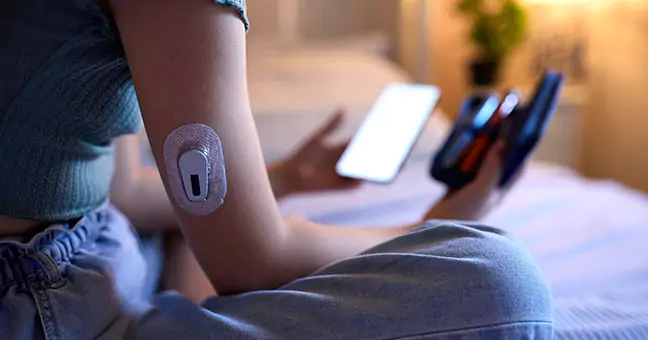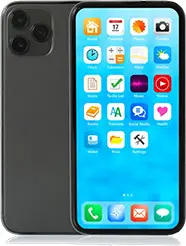In today’s world, advances in technology are constantly changing how we manage our health. Healthcare monitoring devices, in particular, have given people the ability to easily keep track of vital health information as they go about their daily lives.
Many already use wearable devices like fitness trackers to keep monitor things like step count and heart rate, but more specialized medical devices are also available for those with certain chronic health conditions. Keep reading to learn about devices that can help you take control of your health and achieve your wellness goals.
Fitness Trackers
Fitness trackers have a range of capabilities that you can take advantage of to improve your health and fitness. These compact devices are usually worn on the wrist and use sensors to monitor things like step count, heart rate, and even sleep quality.
Fitness trackers are often sold at retail stores and come with different features to meet your unique needs. For example, if you enjoy swimming, a water resistant tracker may be preferable to a standard one. If you like to go running or hiking, you may want a GPS tracker, as these can provide you with detailed information on your pace, elevation, and distance. Keep in mind that although you can wear a fitness tracker all day, you will need to monitor its battery life and charge it regularly.
Some of the most popular fitness trackers, such as FitBit and Garmin, also have mobile apps that you can download to easily view fitness data and assess how much progress you are making towards your goals. If you are looking to live a more active lifestyle, these wearable devices can be great tool for staying motivated and informed.

Smartwatches
A smartwatch is wearable device that combines the features of a smartphone with the convenience of a wristwatch. In addition to messaging and calling capabilities, smartwatches generally have the same features as a basic fitness tracker. Many people use them to record movement, sleep patterns, and other valuable physiological data.
Some smartwatches, such as the OmRon Heart Guide, even measure blood pressure. While readings may not be as accurate as those you would get from a traditional blood pressure cuff, they can still be very useful for people with low or high blood pressure who are constantly on-the-go.
With customizable reminders and alerts, smartwatches can also help users stick to a healthy routine and remain on track to meet their health goals. Setting these reminders may be as easy as saying a few words, since some smartwatches feature artificial intelligence in the form of voice assistants like Siri, Google Assistant, or Alexa. This makes it easy to interact with your device and access health information while in the middle of a workout or other activity.
Popular smartwatches include the Apple Watch and the Samsung Galaxy Watch. An Apple Watch can only be paired with an iPhone, while a Samsung Galaxy Watch works best when paired with an Android. Though smartwatches can be quite pricey, more basic models will cost less than those with more advanced features.
Smart Clothing
Smart clothing refers to garments that feature wearable sensors to monitor physiological data and provide feedback on health and fitness metrics. These smart wearables can come in the form of shirts, pants, or bras and typically record things like heart rate, temperature, or movement. Many athletes use smart clothing for health and fitness tracking, but they can be used by anyone looking to keep an eye on their vital signs.
Some smart clothing will even respond to changes in the body. Smart compression garments, for example, monitor limb swelling and fluid retention in people with lymphedema or venous insufficiency. It uses the information it collects to apply pressure to affected limbs, providing relief to wearers while continuing to monitor tissue volume and fluid buildup.
Smart underwear uses sensors to monitor urinary incontinence in elderly or post-surgery patients. These underwear can detect changes in moisture levels and bladder pressure and alert caregivers or healthcare professionals when leakage occurs. This can greatly improve quality of life for individuals with bladder issues by allowing them to promptly prepare for or address accidents.

Specialized Wearable Medical Devices
Wearable medical devices are becoming increasingly relevant in the healthcare industry. Such devices provide medical professionals and their patients with real-time data on vital signs and other health metrics. Doctors can then use this information to create treatment plans and offer high-quality, personalized healthcare to their patients.
These medical wearables also increase patient engagement by allowing them to actively monitor physiological data like blood pressure, respiratory rate, and skin temperature. For individuals with chronic health conditions, wearable devices offer a sense of security and independence by enabling them to monitor their health from the comfort of their homes.
These devices also allow for remote patient monitoring, which means doctors can check in on patients without needing to conduct in person appointments. They can use the health data gathered from these wearable devices to identify patients at risk for medical emergencies and who may require immediate attention.
ECG Monitors
An ECG (electrocardiogram) monitor is a device that measures the electrical activity of the heart over a period of time. The device does this by using wearable sensors to detect the electrical signals that cause the heart to beat. These signals are recorded and displayed on a graph called an electrocardiogram, which can be used by doctors to diagnose heart conditions.
Additionally, the data from ECG monitors allows healthcare professionals to predict health outcomes and make informed decisions about a patient’s care. Due to their ability to continuously gather reliable data, these wearable devices play a crucial role in the early detection and monitoring of heart conditions.
Continuous Glucose Monitors
Continuous glucose monitors (CGMs) are wearable devices used by individuals with diabetes to monitor glucose levels throughout the day and night. Such devices use a tiny sensor inserted under the skin to take measurements and provide data that helps people manage their blood sugar levels.
CGMs assist healthcare professionals with diagnosing high and low blood sugar by providing information on a patient’s glucose levels over a period of time. After a person has been diagnosed, healthcare providers continue to use data from this wearable device to tailor treatment plans and educate diabetic patients about their condition.
Apnea Monitors
Apnea monitors are vital tools used to monitor the respiratory patterns of individuals while they are sleeping. Though these devices are commonly used to monitor the health of newborns, adults with sleep disorders or certain medical conditions may also benefit from using these devices.
These monitors collect data on a person’s respiratory rate and detect pauses in breathing to quickly alert caregivers of potential issues. By continuously monitoring respiratory activity, apnea monitors play a crucial role in safeguarding patients’ health.
All of these devices, from simple fitness trackers to specialized medical devices, help make monitoring your health easy and convenient. While wearables like fitness trackers and smartwatches can be found at most retail stores, you should consult your doctor if you are interested in using a specialized medical device. Healthcare professionals have the expertise to give you reliable advice on whether a wearable medical device is right for you, as well the best way to obtain one.
If you are reading this article, you are probably looking to take a more active role in managing your health. Learning about different health monitoring devices is certainly a step in the right direction, but costly phone bills and other routine expenses can cause you stress and greatly impact your ability to accomplish your goals.
Thankfully, EASY Wireless offers low-cost phone service to those who qualify for the government’s Lifeline program. To learn more about EASY Wireless or apply for their low-cost phone service, visit the EASY Wireless website or one of their retail locations to speak with a representative.


